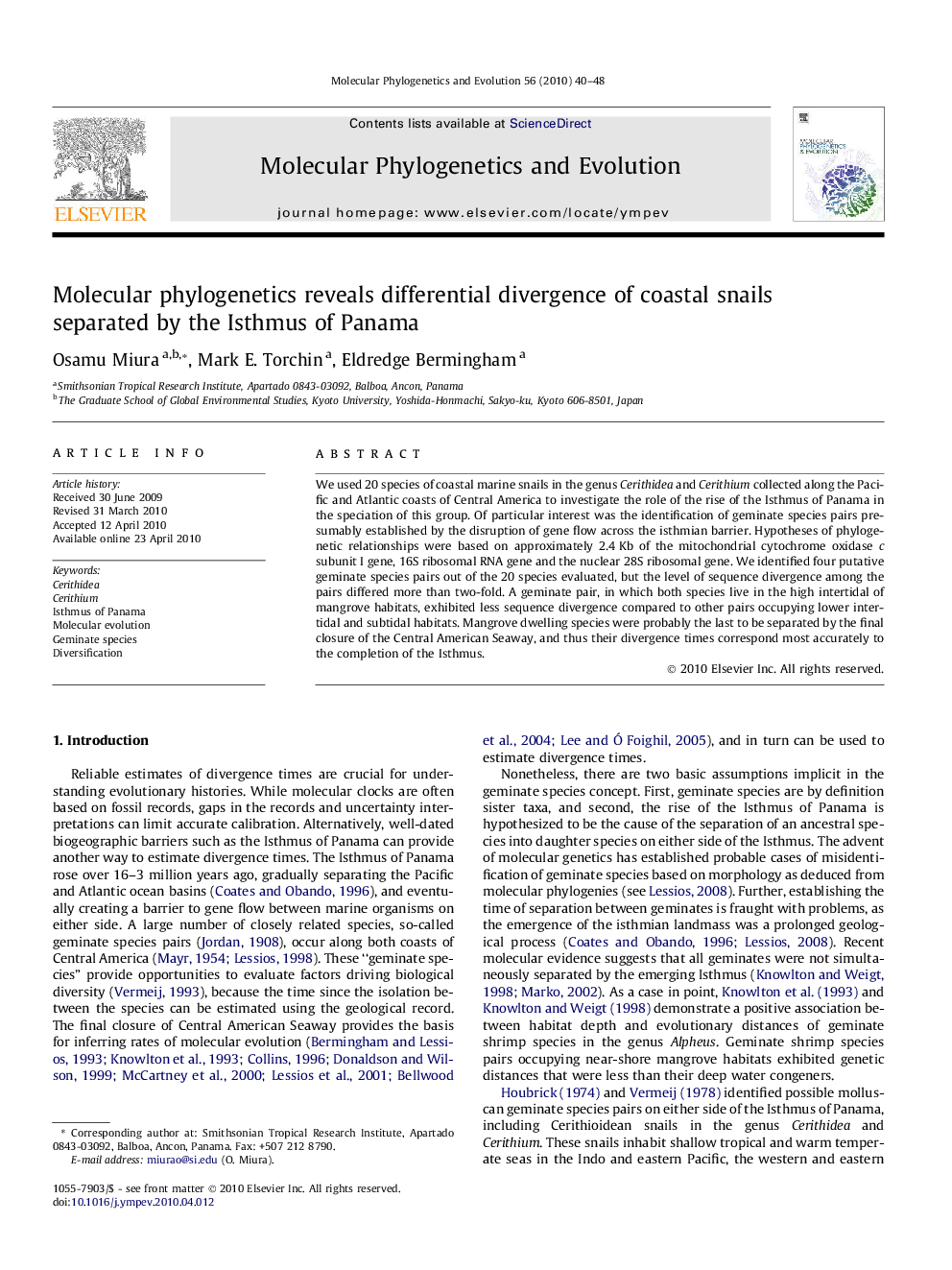| Article ID | Journal | Published Year | Pages | File Type |
|---|---|---|---|---|
| 2834423 | Molecular Phylogenetics and Evolution | 2010 | 9 Pages |
We used 20 species of coastal marine snails in the genus Cerithidea and Cerithium collected along the Pacific and Atlantic coasts of Central America to investigate the role of the rise of the Isthmus of Panama in the speciation of this group. Of particular interest was the identification of geminate species pairs presumably established by the disruption of gene flow across the isthmian barrier. Hypotheses of phylogenetic relationships were based on approximately 2.4 Kb of the mitochondrial cytochrome oxidase c subunit I gene, 16S ribosomal RNA gene and the nuclear 28S ribosomal gene. We identified four putative geminate species pairs out of the 20 species evaluated, but the level of sequence divergence among the pairs differed more than two-fold. A geminate pair, in which both species live in the high intertidal of mangrove habitats, exhibited less sequence divergence compared to other pairs occupying lower intertidal and subtidal habitats. Mangrove dwelling species were probably the last to be separated by the final closure of the Central American Seaway, and thus their divergence times correspond most accurately to the completion of the Isthmus.
